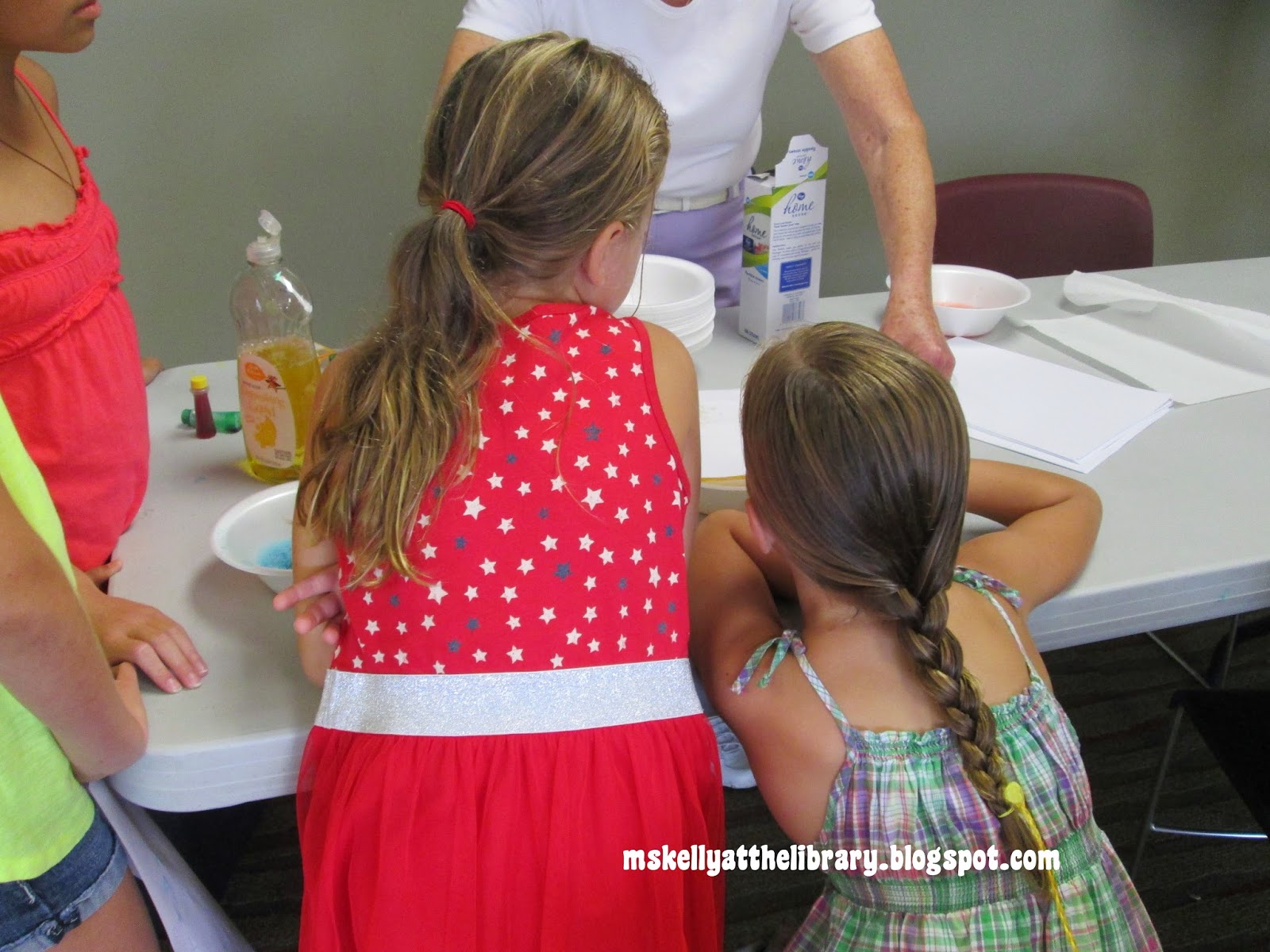Like many libraries, we end our children's summer reading program with a party. Everybody does this a little differently, and I figured it might be worthwhile to some if I shared how it works here.
Here's how it goes:
- The official spiel is that only kids that complete their reading logs get to attend the party. This is done to create an incentive to finish and hype up the party. In reality, I am pretty flexible. I will let a whole family in with one invite. If kids show up that haven't finished, all they need to do is sign a little "contract" saying they will read as much as possible.
- Registration is required, but again very flexible. If you show up the day of and have not registered, that is not a problem at all. Registration is mainly a tool so I have a rough idea how many kids to expect.
- The party usually consists of about 6 different stations relating to the summer theme. These stations are supervised by volunteers from our Friends, as well as teen volunteers. The kids can go through these stations are their own pace.
Our stations this year:
Making bouncy balls: We used a
recipe I found to make bouncy balls. It involves mixing glue, a borax solution and cornstarch. I wouldn't say all of them turned out great, but the kids had fun. It was one of the messiest stations and kept as close to the sink as possible. I also made sure to provide baggies so the kids could take them home.
Lego table: I set out our collection of Legos for the kids to build with. Always a hit, and a fun, non-messy activity.
Making oobleck: The classic creation of a "non-Newtonian fluid" with cornstarch and water. It acts like both a solid and a liquid. Even though it was close to the sink, we still ended up with a trail of cornstarch on the carpet. Thank goodness for vaccuums!
Bubble station: This was actually the most time intensive station to plan.
I had the last minute idea to fill a kiddie pool with homemade bubble solution, but wasn't sure how I was going to pull it off. There were so many possible recipes online and several mentioned letting bubbles sit for at least overnight, which wasn't an option. I ended up following this recipe and creating about a gallon of solution the day before. It seemed to work well enough to make giant bubbles with the wand I had (even without sitting overnight) so I figured it would suit the purpose.
1 gallon of water
1 cup Dawn Dishsoap
4 tablespoons of glycerin (bought near the cake decorating supplies at Michaels)
The day of the party I followed roughly the same ratios to fill a small kiddie pool I got on clearance at Toys R Us. It only took about 3 gallons, and worked out really well. The kids made bubbles with hula hoops and various bubble wands found at the dollar store. I also had a few giant bubble wands bought on clearance at Michaels. The kids had a great time at this station. One volunteer even commented that it was the hit of the party!
Crafts: I had several crafts for the kids to do. The first was decorating "science journals" made out of construction paper and computer paper. I also had food coloring, dish soap and water out so they could "paint" with bubbles. The final craft was making
rotocopters. The only snag in this station is that apparently the bubble painting came out pretty light. I'll definitely have to rethink how to do it in the future.
Snacks: A must have for any party. I couldn't think of any science themed snacks, so I bought cookies, chips and juice for the kids to enjoy.
All in all, I think our party went very well. We had about 70 people there, which is a pretty big crowd for us
. I'm already looking forward to next year!







.gif)



























